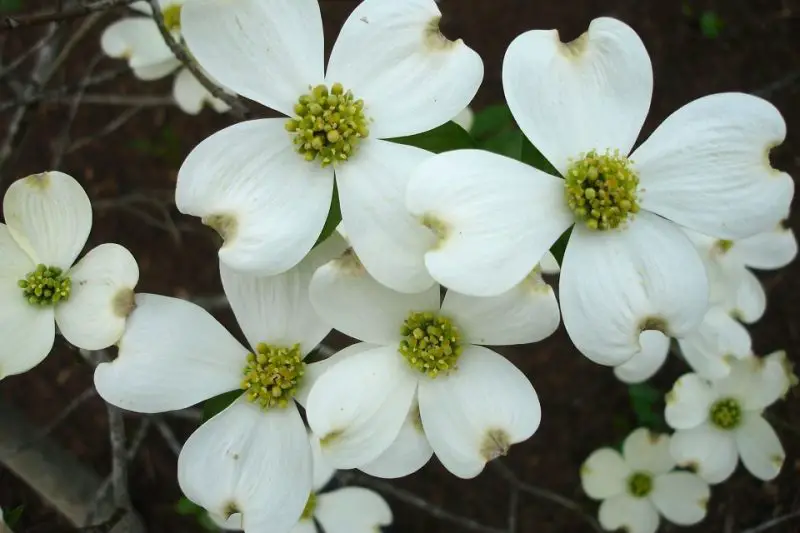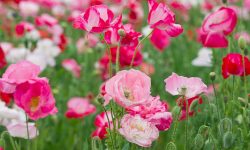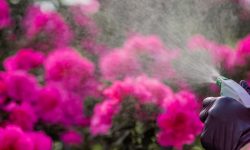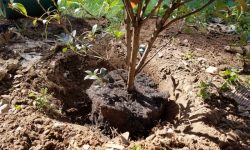Dogwoods are among the most beloved flowering trees in gardens across North America. Their elegant bracts and delicate colors signal the arrival of spring, creating breathtaking displays that attract attention and admiration. From white and pink hues to deep reds, these trees transform landscapes into vibrant, seasonal spectacles. Understanding when dogwoods bloom helps gardeners plan and enjoy their beauty at the peak of the flowering season.
Beyond their visual appeal, dogwoods require thoughtful care to thrive and produce long-lasting blooms. Factors such as climate, soil quality, sunlight, and pruning directly influence flowering. By learning expert techniques and selecting the right varieties, gardeners can ensure consistent, vibrant blossoms year after year, creating a stunning outdoor space filled with seasonal charm.
Understanding the Dogwood Blooming Cycle

Bud Formation and Development
Dogwood flowering begins with bud formation, typically in late winter when the tree is still dormant. During this stage, the tree stores essential energy in its roots, stems, and branches to support flower development. Environmental cues like gradually increasing temperatures and longer daylight hours signal the tree to break dormancy. Proper winter care, including mulching to protect roots and avoiding excessive pruning, ensures that buds develop fully and remain healthy.
Bud development progresses as spring approaches, with buds swelling and preparing to open. Adequate soil moisture and nutrient availability are crucial for strong bud growth, as stressed trees may produce smaller or fewer flowers. Frost protection, such as covering young trees during unexpected cold snaps, can prevent damage to emerging buds. By understanding this early stage of the blooming cycle, gardeners can take proactive steps to ensure that dogwoods achieve full, vibrant blossoms once the flowering season begins.
Flowering and Peak Bloom
Once buds open, dogwoods enter the flowering phase, showcasing their large, colorful bracts. This stage typically lasts two to three weeks, though timing varies depending on species, climate, and local weather patterns. Flowers attract pollinators, such as bees and butterflies, adding ecological value to the garden. Peak bloom is the period when bracts are at their fullest and most vibrant, offering maximum visual impact.
Several factors influence the duration and quality of flowering. Consistent watering, mulching, and protection from harsh winds help maintain flower longevity. Late frosts or heavy rains can shorten bloom periods, while optimal sunlight and soil conditions support vibrant, healthy flowers. Recognizing the stages of the flowering cycle allows gardeners to plan garden activities, schedule visits, and implement care practices that maximize the aesthetic and ecological benefits of dogwood blooms throughout the season.
Environmental Factors Influencing Dogwood Blooming
Temperature and Climate
Temperature is one of the most critical factors affecting dogwood blooming. Warm, stable spring temperatures encourage buds to open fully and produce vibrant, long-lasting flowers. Sudden cold snaps or unexpected late frosts can damage emerging buds, reduce flower size, or even prevent blooming entirely. Gardeners in regions with variable spring weather must monitor local forecasts and provide protective measures, such as frost cloths or temporary coverings, to safeguard buds during critical growth stages.
Regional climate differences also impact bloom timing and duration. In southern states, dogwoods often bloom earlier due to warmer temperatures, while northern states may experience delayed flowering. Prolonged periods of drought or heat stress can cause buds to drop prematurely, while consistently mild conditions support a longer flowering period. Understanding local climate patterns allows gardeners to anticipate flowering and implement care strategies that maximize the beauty and longevity of dogwood blooms each year.
Soil Conditions and Sunlight
Soil quality plays a fundamental role in dogwood health and flowering. Well-drained, slightly acidic soil encourages robust root growth and supports optimal bud and flower development. Compacted or poorly drained soil can lead to waterlogging, root stress, and reduced flower quality. Regular soil testing and amendments with compost or organic matter ensure the tree receives necessary nutrients, fostering consistent and vibrant blooms.
Sunlight exposure is equally essential. Dogwoods thrive best in partial shade or filtered sunlight, which prevents bract scorching and encourages strong flower production. Too little light can weaken the tree and reduce bloom size, while excessive direct sunlight may stress the plant. By optimizing both soil conditions and sunlight exposure, gardeners provide dogwoods with the ideal environment for producing long-lasting, striking flowers that enhance any garden landscape.
Choosing the Right Dogwood Varieties for Your Region
Selecting the appropriate dogwood variety is essential for achieving vibrant, reliable blooms. Different species have varying climate preferences, bloom times, and disease resistance levels. Cornus florida, or the flowering dogwood, thrives in temperate regions and produces early spring blooms in white, pink, or red. Its moderate size and adaptability make it ideal for home gardens, and it performs best in well-drained, slightly acidic soil with partial shade. Choosing this variety ensures a visually stunning display in areas with mild to moderate climates.
Cornus kousa, the Kousa dogwood, is a later-blooming species known for its star-shaped bracts and resistance to common diseases such as dogwood anthracnose. It is well-suited for regions with variable spring weather, as its blooms appear after the risk of late frost. Kousa dogwoods also tolerate a wider range of sunlight conditions, from full sun to partial shade, and they offer ornamental fruit in the fall, adding multi-season interest. Gardeners in northern or unpredictable climates often select Kousa varieties to extend the flowering season and reduce maintenance challenges.
When choosing dogwoods for any region, consider local soil conditions, sun exposure, and moisture availability. Native dogwoods are often the most resilient, adapting naturally to local pests and climate. Gardeners can also mix early and late-blooming varieties to enjoy a longer display of flowers throughout spring. By selecting the right species for the specific environment and combining it with proper care, homeowners can maximize flowering potential, enhance garden beauty, and ensure healthy, long-lasting trees that thrive for years.
Regional Blooming Patterns of Dogwoods
Southern States
In southern states, dogwoods bloom earlier than in most other regions. The warmer temperatures in states like Georgia, Alabama, and Florida allow buds to develop quickly, often resulting in flowering as early as late March. Mild winters combined with increasing spring sunlight create ideal conditions for vibrant, long-lasting bracts. Gardeners can enjoy extended viewing periods if trees receive proper care, including mulching to retain soil moisture, consistent watering during dry spells, and protection from common pests. Fertilizing in late winter with balanced nutrients supports strong bud formation, while pruning damaged or crowded branches ensures that the tree’s energy is directed toward healthy flower development.
Color intensity is another factor influenced by southern conditions. Dogwoods in these areas typically produce brighter, more vivid bracts thanks to rich, well-drained soil and ample sunlight. However, sudden late frosts or unpredictable cold snaps can damage emerging buds, reducing the flower display. Gardeners should monitor local weather and take protective measures, such as frost cloths or temporary coverings. Strategic tree placement, careful watering, and routine maintenance help southern dogwoods reach their full visual potential, providing a spectacular and reliable spring show that can be enjoyed year after year.
Northern States
In northern states, dogwoods bloom later due to cooler spring temperatures. Regions like Michigan, New York, and Wisconsin generally see flowering begin in late April or early May. This delayed schedule helps trees avoid frost damage, but it also shortens the visible bloom period. Gardeners need to provide attentive care, including mulching to regulate soil temperature, adding organic soil amendments to enhance fertility, and maintaining balanced watering to support healthy bud development. Early attention to pruning helps remove dead or weak branches, directing the tree’s energy toward flower production and improving overall bloom quality.
Soil quality, sunlight exposure, and microclimate conditions are crucial for northern blooms. Well-drained, slightly acidic soil encourages strong roots and vigorous flowering, while partial shade protects delicate bracts from harsh midday sun. Consistent irrigation prevents stress that can lead to smaller or fewer blooms. Selecting suitable dogwood varieties adapted to northern climates further improves bloom reliability. By understanding local conditions and implementing careful seasonal maintenance, gardeners can enjoy vibrant, long-lasting dogwood flowers, creating beautiful spring displays despite shorter and cooler growing seasons.
Selecting the Best Dogwood Varieties for Vibrant Blooms
Cornus Florida (Flowering Dogwood)
Cornus florida is one of the most popular and widely planted dogwood varieties in North America. It produces large, showy bracts in shades of white, pink, and red during spring, creating striking displays in gardens and landscapes. This variety thrives in well-drained, slightly acidic soil, which supports healthy root development and strong flowering. Partial shade is ideal, as it protects delicate flowers from intense midday sunlight that can scorch bracts. Proper placement ensures optimal bloom quality and helps maintain vibrant, long-lasting flowers throughout the season.
Gardeners value Cornus florida for its manageable size, making it suitable for small and medium-sized gardens, as well as its adaptability to a range of climates. Selecting healthy specimens with strong root systems and monitoring for common pests and diseases ensures consistent, high-quality blooms year after year. Beyond spring, Cornus florida adds seasonal interest with vibrant fall foliage in shades of orange and red, and bright red berries that attract birds and wildlife. This combination of beauty, resilience, and ecological value makes it a top choice for gardeners seeking reliable, visually stunning displays in temperate regions.
Cornus Kousa (Kousa Dogwood)
Cornus kousa, commonly known as Kousa dogwood, is a late-blooming variety prized for its star-shaped bracts and exceptional disease resistance. Unlike Cornus florida, it typically blooms in late spring, often after the risk of late frost has passed. This makes Kousa dogwood a reliable option for gardeners in regions with unpredictable spring weather. It thrives in well-drained soil and can tolerate a wider range of sunlight, from full sun to partial shade, providing flexibility in garden placement.
In addition to its spring blooms, Kousa dogwood offers multi-season interest. The tree produces attractive, edible red fruits in late summer to fall, and its foliage turns striking shades of red and orange during autumn. Its resistance to common diseases, including dogwood anthracnose, reduces maintenance needs and enhances long-term garden performance. Selecting Cornus kousa ensures a consistent, vibrant display and adds structural beauty to landscapes. Its combination of visual appeal, durability, and ornamental fruit makes it an excellent choice for both novice and experienced gardeners seeking stunning, long-lasting blooms.
Caring for Dogwoods to Promote Bloom
Proper Watering Techniques
Watering is essential for dogwoods to produce full, vibrant blooms. Consistent moisture supports bud development and overall tree health, particularly during dry spells in spring. Newly planted dogwoods require frequent watering to help establish a strong root system, while mature trees benefit more from deep, infrequent watering that encourages roots to grow downward. This approach strengthens the tree’s drought resistance and ensures sufficient energy is allocated for flower production. Gardeners should monitor soil conditions regularly, checking for dryness or waterlogging, to maintain optimal moisture levels.
Overwatering can be just as harmful as under-watering, potentially causing root rot and encouraging fungal diseases. Adjusting watering schedules based on rainfall and soil type helps prevent these issues. Applying mulch around the tree’s base conserves soil moisture, reduces temperature fluctuations, and prevents weed competition. Combining careful watering practices with seasonal maintenance, such as pruning and fertilization, ensures dogwoods remain healthy and resilient. Proper irrigation supports robust flower development, resulting in long-lasting, colorful blooms that enhance the garden’s spring beauty year after year.
Soil and Fertilization
Fertilization is a key factor in promoting healthy growth and vibrant dogwood blooms. Using a balanced, slow-release fertilizer in early spring provides essential nutrients, including nitrogen, phosphorus, and potassium, which support bud formation, root development, and flower production. Proper fertilization encourages stronger, more resilient trees that can withstand environmental stress and produce longer-lasting blooms. Gardeners should follow manufacturer instructions and avoid over-fertilizing, which can harm roots and reduce flower quality.
Timing and method of fertilization also affect bloom success. Applying fertilizer just before or during early bud development ensures nutrients are available when the tree needs them most. Organic amendments, such as compost or well-rotted manure, can improve soil structure, retain moisture, and supply additional trace elements that enhance flowering. Combining fertilization with proper watering, mulching, and pruning creates optimal growing conditions. With consistent nutrient management, dogwoods develop strong root systems, lush foliage, and abundant, vibrant flowers that elevate the beauty of any garden throughout the spring season.
Pruning and Maintenance
Pruning plays a vital role in maintaining healthy dogwoods and promoting vibrant blooms. Removing dead, damaged, or diseased branches during late winter or early spring allows the tree to direct energy toward healthy growth and flower production. Light thinning of interior branches improves air circulation, reducing the risk of fungal diseases that can negatively impact buds and blossoms. Strategic pruning also shapes the tree, ensuring balanced growth and enhancing its ornamental appeal.
Timing and technique are crucial for effective pruning. Avoid heavy pruning during peak flowering or late summer, as this can remove next season’s buds and diminish bloom potential. Using clean, sharp tools prevents infection and encourages quick healing of cuts. By combining proper pruning with consistent watering, fertilization, and pest management, gardeners can optimize dogwood health. Well-pruned trees produce larger, more abundant flowers and maintain a beautiful, symmetrical canopy, ensuring that each spring delivers a visually stunning display of colorful bracts and long-lasting seasonal charm.
Common Problems Affecting Dogwood Blooms
Pests and Insects
Dogwoods are vulnerable to a variety of pests that can significantly affect flowering and overall tree health. Common insects include aphids, borers, and scale, which feed on leaves, stems, and sometimes flowers. Infestations can weaken trees, reduce nutrient flow, and cause distorted or prematurely dropping flowers. Early detection is key, so gardeners should inspect branches, leaves, and buds regularly, especially during the spring growing season. Signs of infestation may include sticky residue, chewed foliage, or unusual discoloration. Prompt identification allows for timely intervention before serious damage occurs.
Managing these pests effectively requires a combination of preventive and active strategies. Introducing natural predators, such as ladybugs for aphids, helps control populations without harming beneficial insects. Insecticidal soaps or horticultural oils provide safe, targeted treatment when infestations are detected. Maintaining overall tree health through proper watering, mulching, and fertilization strengthens the dogwood’s resistance to pests. By implementing consistent monitoring and integrated pest management, gardeners can ensure dogwoods remain vigorous, producing vibrant, abundant blooms and maintaining strong, healthy growth throughout the season.
Fungal Diseases
Dogwoods are susceptible to several fungal infections that can negatively impact flowering and overall tree health. Common diseases include dogwood anthracnose, powdery mildew, and leaf spot, which often appear in wet, humid conditions during spring or early summer. Infected trees may display symptoms such as discolored or spotted leaves, premature leaf drop, twig dieback, and reduced flower production. Severe infections can weaken the tree, making it more vulnerable to pests and environmental stress. Regular inspection during the growing season helps detect these issues early, allowing gardeners to take timely action before serious damage occurs.
Preventive and proactive care is essential to minimize fungal risks. Planting resistant dogwood varieties, such as Cornus kousa, significantly reduces susceptibility. Ensuring adequate spacing and pruning for good air circulation helps leaves dry quickly, limiting conditions favorable to fungal growth. Prompt removal and disposal of infected leaves or branches prevent the spread of disease. During periods of high disease pressure, fungicide applications can protect healthy trees and preserve flowers. Combined with proper watering, mulching, and soil management, these practices help dogwoods maintain strong, vibrant blooms throughout the spring and summer, ensuring the tree’s health and garden appeal.
Environmental Stress
Dogwoods are sensitive to environmental stress, which can significantly affect blooming and overall tree health. Extreme weather events, including late frosts, prolonged heat, and drought, can damage buds, reduce flower quality, or delay blooming altogether. Poor soil conditions, such as compacted or poorly drained soil, restrict root growth and limit nutrient absorption, further weakening the tree. Urban environments often introduce additional stressors, including air pollution, reflective heat, and limited space for roots, all of which can reduce flower production and tree vigor. Monitoring and understanding these factors is crucial for gardeners who wish to maintain reliable and vibrant blooms.
Mitigating environmental stress requires proactive care and thoughtful planting. Providing adequate, consistent watering helps trees withstand dry periods, while mulching retains soil moisture, moderates temperature fluctuations, and protects roots. Amending soil with compost or other organic matter improves fertility and drainage, promoting strong, healthy root systems. Selecting planting locations with partial shade shields dogwoods from harsh midday sun and creates optimal growth conditions. By addressing environmental stressors through careful site selection, maintenance, and monitoring, gardeners can enhance bloom reliability, ensuring dogwoods produce abundant, colorful flowers and maintain a flourishing, visually stunning presence in the garden throughout the season.
Expert Tips for Extending Dogwood Blooming Season
Strategic Planting Locations
Selecting the right planting location is crucial for ensuring vibrant, long-lasting dogwood blooms. Dogwoods perform best in areas that receive morning sunlight and afternoon shade, which balances the need for energy through photosynthesis with protection from intense midday heat. Morning sun stimulates strong bud development, while afternoon shade shields delicate flowers from scorching and reduces water stress. Proper positioning also encourages healthy growth of foliage and branches, supporting overall tree structure and flower display. Gardeners should assess light patterns throughout the day and throughout the season to identify the optimal spot for each tree.
Soil conditions and wind exposure further influence bloom quality. Well-drained soil prevents waterlogging and root rot, which can impair flowering and weaken the tree. Installing windbreaks or planting near natural barriers protects blooms from physical damage caused by strong gusts. Additionally, selecting companion plants can provide extra shade, enhance soil health, or attract pollinators that support flower reproduction. Thoughtful planning of planting locations, combined with regular maintenance and environmental awareness, allows dogwoods to thrive and consistently produce vibrant, showy blossoms that maximize garden beauty throughout the spring season.
Timely Pruning
Pruning at the right time is essential for maintaining healthy dogwoods and extending the flowering season. Removing dead, damaged, or overcrowded branches in late winter or early spring enhances air circulation and ensures that the tree’s energy is directed toward healthy buds rather than unproductive growth. Avoid pruning during the bloom period, as cutting branches while flowers are developing can significantly reduce the visible flowering season and compromise overall display. Regular, thoughtful pruning also reduces the risk of disease and allows sunlight to reach inner branches, improving overall tree vitality.
Beyond flower production, pruning supports the structural health and aesthetic shape of the tree. Well-shaped branches create a balanced canopy that can sustain multiple flushes of blooms over the season. Combining timely pruning with proper watering, fertilization, and pest management further promotes robust growth and vibrant flowers. Gardeners who consistently apply these techniques can enjoy extended flowering periods and maintain visually striking dogwoods. Properly pruned trees not only produce abundant, long-lasting blooms but also remain resilient and attractive, enhancing the beauty of any garden throughout spring and early summer.
Fertilization for Longer Blooms
Proper fertilization is a key factor in extending the flowering period of dogwoods. Applying a balanced, slow-release fertilizer in early spring provides essential nutrients such as nitrogen, phosphorus, and potassium, which support healthy bud formation and promote strong flower development. Gardeners should avoid excessive nitrogen, as it encourages leaf growth at the expense of blooms, potentially reducing both flower size and quantity. Regular soil testing can help determine nutrient needs and ensure that fertilization supports optimal flowering without harming tree health.
Supplemental feeding during early bloom can further enhance flower vibrancy, color intensity, and longevity. Using fertilizers that release nutrients gradually ensures the tree receives consistent nourishment throughout the flowering season. Combining fertilization with proper watering, mulching, and pruning creates ideal conditions for dogwoods to produce abundant and long-lasting blossoms. By carefully timing nutrient applications and maintaining overall tree health, gardeners can maximize the visual impact of dogwoods, enjoy extended periods of colorful flowers, and ensure their landscape remains vibrant and visually appealing throughout spring and early summer.
Tips for Maintaining Dogwoods Year-Round
Seasonal Care Practices
Year-round care is essential to maintain healthy dogwoods and ensure vibrant, long-lasting blooms. In winter, applying a thick layer of mulch around the root zone helps regulate soil temperature, retain moisture, and protect roots from frost damage. Late winter or early spring pruning removes dead, damaged, or overcrowded branches, improving air circulation and directing the tree’s energy toward healthy growth. These practices prepare the tree for the upcoming flowering season and set the stage for strong, abundant blooms.
During spring and summer, consistent watering is crucial, especially during dry periods, to support bud development and maintain overall tree health. Gardeners should also monitor for pests and diseases, as early detection allows for timely interventions that prevent severe damage. Fertilization and occasional soil amendments provide additional nutrients that encourage vigorous growth and improve flower quality. By following a comprehensive, year-round care routine that combines pruning, watering, fertilization, and pest management, gardeners can maximize both the beauty and longevity of dogwood blooms, ensuring trees remain healthy and visually stunning throughout every season.
Soil and Nutrient Management
Healthy, well-balanced soil is the cornerstone of robust dogwood growth and vibrant flowering. Regular soil testing allows gardeners to monitor pH levels and essential nutrient content, ensuring that conditions remain optimal for root development and bloom production. Dogwoods prefer slightly acidic, well-drained soil, which encourages strong, deep roots and prevents issues such as waterlogging or nutrient deficiencies. Incorporating compost, well-rotted manure, or other organic matter improves soil structure, fertility, and moisture retention, creating an environment that supports both healthy foliage and abundant flowers.
Fertilization complements soil management by providing key nutrients at critical growth stages. Applying a balanced fertilizer in early spring supports bud formation and overall tree vigor, while supplemental feeding during bloom can maintain flower size and color intensity. Gardeners should avoid excessive nitrogen, which promotes leaf growth at the expense of blossoms. Combined with proper watering, mulching, and seasonal maintenance, effective soil and nutrient management reduces environmental stress, enhances resilience against pests and diseases, and ensures dogwoods consistently produce colorful, long-lasting blooms. Thoughtful soil care ultimately maximizes both the visual appeal and health of dogwoods year after year.
Pest and Disease Prevention
Proactive pest and disease management is essential for maintaining healthy dogwoods and ensuring consistent, vibrant blooms. Common pests such as aphids, borers, and scale insects can weaken trees by feeding on leaves, stems, and buds, while fungal infections like anthracnose, powdery mildew, and leaf spot can damage foliage and reduce flower quality. Regular inspections throughout the growing season help gardeners detect early signs of infestation or disease, allowing prompt action before significant harm occurs. Removing infected leaves, pruning affected branches, and monitoring soil health all contribute to minimizing stress and protecting flower production.
Integrated pest management techniques offer effective, environmentally conscious solutions. Introducing natural predators, such as ladybugs and lacewings, controls insect populations, while targeted, safe chemical treatments can address severe infestations. Proper tree spacing and pruning improve air circulation, reducing the risk of fungal diseases, while maintaining well-drained, nutrient-rich soil strengthens tree resilience. By combining vigilant monitoring, preventive care, and timely interventions, gardeners ensure dogwoods remain healthy and robust, producing abundant, long-lasting blooms that enhance the beauty and vitality of any garden year after year.
FAQ About Dogwoods and Their Blooming
When do dogwoods typically start blooming?
Dogwoods usually bloom in spring, but timing varies by region and species. In southern states, flowering can begin in late March, while northern areas often see blooms in late April or May. Climate, soil, and weather conditions all influence the exact timing.
How long do dogwood flowers last?
Dogwood blossoms generally last two to three weeks. Weather conditions like rain or wind can shorten this period, while consistent care and proper location can extend flower longevity. Healthy trees with optimal sunlight and soil support vibrant, longer-lasting blooms.
Can I extend the blooming season of dogwoods?
Yes, by strategic planting in partial shade, timely pruning, and proper fertilization, gardeners can encourage prolonged flowering. Protecting buds from frost and maintaining tree health also helps. Some varieties, like Kousa dogwoods, naturally bloom later, creating a staggered flowering effect.
What are common problems that affect dogwood blooms?
Pests like aphids and scale, fungal diseases such as anthracnose, and environmental stress can impact flowering. Proper care, early detection, resistant varieties, and preventive measures help maintain flower quality and ensure healthy, consistent blooms each season.
Which dogwood variety produces the most vibrant flowers?
Cornus florida is prized for large, showy bracts and early blooms. Cornus kousa offers later, star-shaped flowers and excellent disease resistance. Choosing the right variety for your region, combined with proper care, ensures vibrant, long-lasting blooms and overall tree health.
Conclusion
Dogwoods are true gems in any garden, offering breathtaking spring color and seasonal charm. Understanding their blooming patterns, regional influences, and care requirements allows gardeners to enjoy vibrant, long-lasting flowers each year. By selecting the right varieties, providing proper soil, water, and pruning, and managing pests and diseases proactively, you can maximize bloom potential. With careful planning and attention, dogwoods not only enhance landscape beauty but also create a serene, inviting outdoor space. Celebrate their elegance and plan thoughtfully to enjoy a spectacular flowering display every season.






